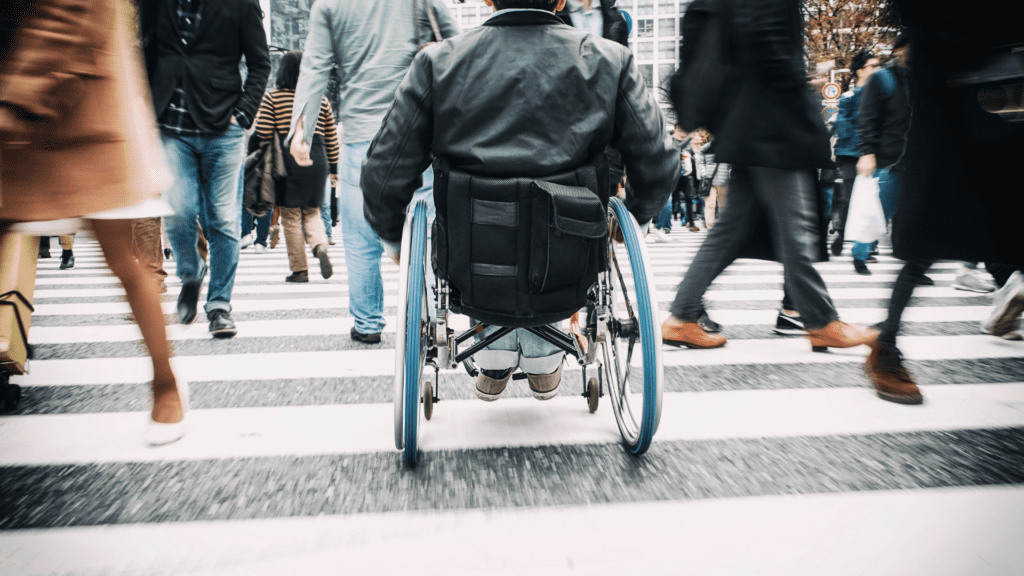
By Nazanin Heydarian
Some odd years ago, in the month of September, a beautiful, blind baby girl was born to two amazing Persian parents! This kid was me.
This year, inspired by my birthday and in light of recent National Institutes of Health efforts to combat ableism in health science, I declared September dismantling ableism month. Anyone who sent me an email during the month of September received the following automatically generated response:
Ableism is disability-based prejudice and manifests internally, interpersonally, and in our social (and physical) structures and policies. Ableism shows up everywhere and creates serious problems for disabled people and society – because we are all interconnected and if one of us isn’t allowed to reach their full potential, then everyone misses out.
– Nazanin Heydarian
I invite you to celebrate with me by educating yourself and/or advocating for change.
I got a little something for everyone!
In the email, I included various topical resources that I’d like to share with all of you:
-I highly recommend listening to the NIH webinar series on dismantling ableism in the health sciences. These talks are great for background listening when you are getting other things done. Personally, I’ve been listening to them while working out. There’s nothing that motivates you to lift something heavy like listening to top researchers in the field name ableism and call the community to action! Or maybe that’s just me.
-Here’s the special report that NIH published in December 2022 that does a fantastic job of naming specific examples of ableism and calling NIH to address it.
-For those who prefer a quicker snapshot, these are two great, short videos.
One by Stella Young on Inspiration Porn: (17) Inspiration porn and the objectification of disability: Stella Young at TEDxSydney 2014 – YouTube
And a short cartoon illustrating the social vs. medical model of disability: (17) Social Model Animation – YouTube
-For those of you who teach, here is a resource with specific examples of activities and exercises you can use to get your students thinking about disability and challenging some ableism!
Disability in Intro Psych Revision 042419 – Google Docs.pdf (teachpsych.org)
If you live in the U.S., then urge your representatives to vote to pass the bill to raise the asset limit for individuals receiving SSI from $2,000 to $10,000, and for married couples from $3,000 to $20,000. Use this very simple tool linked here: Advocacy Action Center – Cure SMA. At the beginning of this video, Squirmy and Grubs explain why this is important and how the current system can force disabled people into poverty: (2) Our Most Important Video Yet – YouTube.
These are just a few suggestions and certainly not the only ways to commemorate Dismantling Ableism Month!
If you do check any (or all, or any other) of these resources out, please please please tell me about it! That would really make my birthday special.
After setting up this automatic reply, I noticed more opportunities to discuss ableism and its impact arise at work. Our School of Social Work had a one-hour-long in-service from the assistant director at the Student Accommodation Services office and a lively conversation followed. I was invited to write this blog post, to put together a conference panel on the topic of disability and mental health in youth, and was nominated to serve on a prestigious medical journal review board. I got a few private messages from people who told me they appreciated my automatic email message. More than anything, by writing and setting this automatic reply, I felt like I gave myself permission to talk about ableism more than usual; I felt a little more unapologetic about it as well.
This month, I began looking into independent transportation options for myself, as a driving disabled person living in a very car-centric community. I found transportation barriers including the lack of public transportation access from where I live to where I need to go, both in the public and paratransit systems. So this month, I gave myself a gentle push to begin to reach out to elected officials to begin exploring with them how to address these systemic barriers that affect not only me but thousands of people in my city who, like me, face transportation barriers (e.g., other people with disabilities that impact driving, those who can’t afford a car, those with large families who may not all fit into the car the family has, just to name a few). By taking proactive steps towards promoting access and removing barriers to community life, we set ourselves up to benefit more from the contributions of a greater proportion of our community’s citizens.
September is over, but I invite you to extend the spirit of Dismantling Ableism Month throughout the entire year!
Nazanin Heydarian is a 2023 National Walking College Fellow and a social health psychologist who examines chronic disease self-management and maternal and child health disparities experienced by people with disabilities. Additionally, she enjoys parenting a toddler, strength training, and roller skating. She does her best to get around her car-centric environment without a car. She can be reached at naz.m.hey@gmail.com.